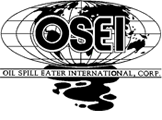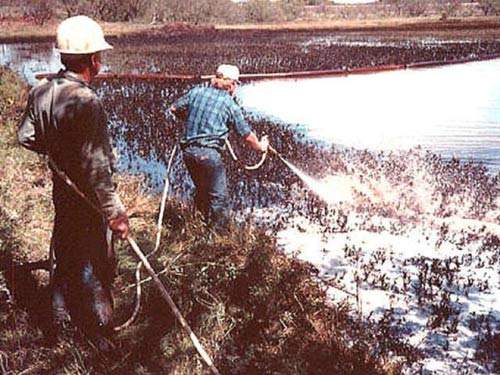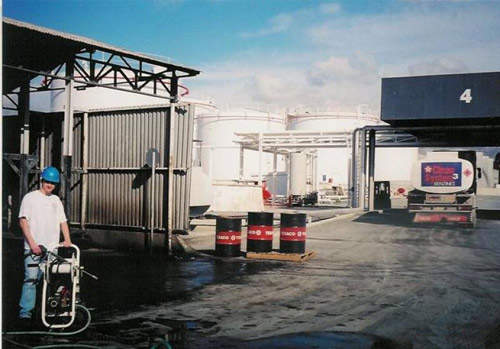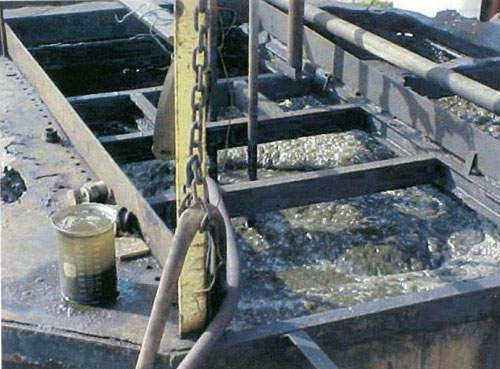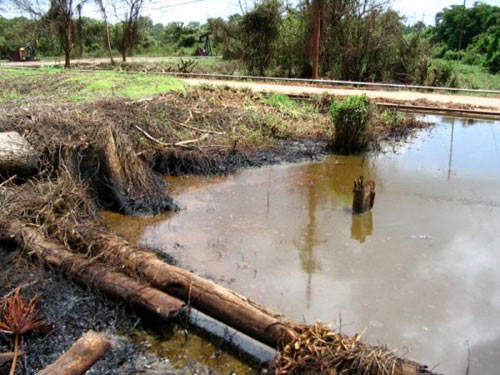Oil Spill Eater International’s (OSEI) Oil Spill Eater II (OSE II) is the world’s most environmentally safe and cost-effective bioremediation process for the removal of hazardous-waste spills and contamination of any size, on soil, pavement and water.
Since 1989, OSE II has safely removed numerous types of hazardous materials on the ground, in the ground and in the water. OSE II reduces clean-up costs and permanently eliminates the hazardous-waste problem in place, with no secondary clean-up required.
OSE II has been listed and utilized by the US Military’s defense logistics since 1990.
Hazardous-waste clean-up technology for the offshore industry
OSE II is not a bacteria (bug), fertilizer or dispersant product, but a unique biocatalytic system of preformed multi-enzyme liquid concentrate. It stimulates and accelerates natural biological reactions. When combined with fresh or salt water and oxygen, OSE II will cause crude oil and other organic substances to rapidly decompose, eventually biodegrading them to carbon dioxide and water.
OSE II can be used virtually anywhere that can sustain microbial life. It has been used in oceans, lakes, rivers, streams, all types of soil and rocky / pebbled areas. It can also be used in marshes, estuaries, underground soil and underground water, and under buildings and immovable objects (in-situ). It is particularly useful for drilling companies and pipeline operators working in refineries and oil tankers.
Clean-up equipment for hydrocarbon spills
When contamination is exposed to the open air and weather, it can form a skin, similar to the way gelatin sets up. The older the hydrocarbon and the more it is exposed to the elements, the thicker the skin becomes; hence, eventually becoming asphaltenes.
The thicker this skin, the longer bioremediation will take to reduce the contamination’s TPH. Therefore, the sooner a contamination is addressed and mitigated, the less expensive and time-consuming contamination clean-up will be.
Contaminants that OSE II can bioremediate include the following:
- Most organic-based compounds
- Most hydrocarbon-based compounds
- All types of gasoline
- Diesel fuel
- Numerous solvents
- Crude oils, including Alaskan north-slope crude oil
- Pesticides
- Zylene
- Toluene
- Ethyl benzene
- Chrysene
- Hopane
- Hexadecane
- Naphthalene
- Fluorene
- Phytane
- Phenanthrene
Environmentally friendly hazardous-waste clean-up tool
OSE II is an environmentally safe clean-up method for waste spills because it uses nature’s own bioremediation processes to effectively eliminate hazardous materials. It is listed on the US Environmental Protection Agency’s national contingency plan (NCP) for oil spills.
OSE II is non-toxic to humans, animals, plants and marine life. It is non-poisonous, even if accidentally ingested, and non-irritating to the most sensitive skin. OSE II contains no allergens known to cause skin, respiratory or other allergic reactions.
OSE II is 100%-biodegradable and has a five-year shelf life when stored at temperatures below 120ºF. Freezing does not harm OSE II, however cold temperatures slow its reaction rate somewhat. The product is completely stable and reactive in a pH environment of 3.5pH to 11.7pH.
Fuel spill first-response clean-up tool
The US Navy has successfully used OSE II as a first-response clean-up tool for three-and-a-half years on fuel spills in the San Diego Bay with no adverse impact, while reducing its clean-up costs by 90%.
Clean-up tool for crude oil, gasoline or spilled hydrocarbons
OSE II contains no corrosive chemicals or metal trace elements, and will not damage electrical insulation or painted surfaces. It has been determined by OSHA (Anchorage, Alaska) that the use of OSE II does not require special protective clothing or safety equipment is required.
OSE II will reduce fire hazards once emulsification and the solubilization process is started. Once this process begins, the instant OSE II is applied to crude oil, gasoline or spilled hydrocarbons.
Hazardous-waste clean-up tool application
OSE II can be applied easily using a pumper-truck or fire hose, or even a pump-up hand sprayer. On water, OSE II can be applied by omni barge, helicopter, plane or any eductor system.
The tool eliminates the need for skimmers and the problem of disposal (clean docks, driftwood, boats, rubber gear and shorelines). No secondary clean-up is required because OSE II converts the hydrocarbons to CO2 and water.

